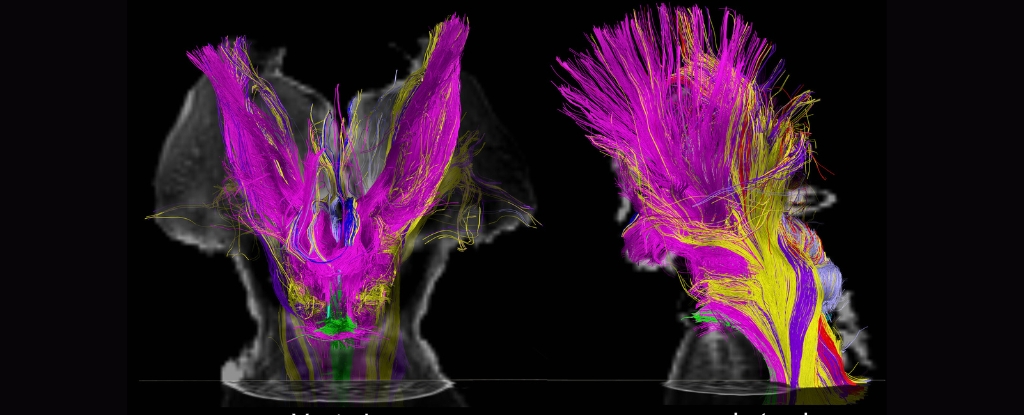A new study published in Scientific Reports sheds light on the lasting effects of the drug alprazolam, commonly known as Xanax, when used during adolescence. Using male mice as their subjects, the researchers discovered that exposure to this drug at a young age could enhance the animals’ sensitivity to opiates, such as morphine, even long after the drug exposure has ceased. This research highlights the potentially negative long-term consequences of using certain medications during critical developmental stages.
Benzodiazepines, including alprazolam, are frequently prescribed to treat anxiety, insomnia, and other disorders but come with risks such as addiction and dependency. Despite their known dangers, alprazolam remains highly prescribed, often misused alongside other substances like opioids. This misuse is particularly concerning in adolescents, who may not fully understand the risks involved.
Previous research has mostly focused on older adults, leaving a significant gap in understanding how these drugs affect younger individuals. Recognizing this gap, the researchers set out to explore the specific impacts of alprazolam on adolescent development.
“In our laboratory, we investigate the effects of early life exposure to psychotropic drugs and stress on brain biochemistry and behavior,” said study author Astrid M. Cardona-Acosta of Texas A&M University. “We were particularly interested in the effects of benzodiazepines, especially alprazolam (Xanax) due to its high prescription rates in the general population, and its popularity among adolescents for recreational use. Xanax is popular worldwide.”
The study utilized male mice that were in the adolescent stage of development. They were kept in temperature-controlled conditions with a consistent light-dark cycle (12 hours each), mimicking natural environmental conditions.
Alprazolam, the drug under investigation, was administered at doses of 0.5 mg/kg and 1.0 mg/kg once daily for 14 consecutive days. These doses were chosen based on previous studies to reflect recreational use levels that could induce behavioral effects without causing overt toxicity or distress. A control group received a vehicle solution that mimicked the administration procedure but without the active drug.
To assess the rewarding effects of opiates potentially altered by prior alprazolam exposure, the researchers used the Conditioned Place Preference (CPP) paradigm. This method is widely used in behavioral neuroscience to measure the preference for an environment associated with drug administration.
The results showed that mice pre-treated with alprazolam developed a strong preference for environments associated with even subthreshold doses of morphine. This effect was evident not only in the short term, 24 hours after the last alprazolam exposure, but also in the long term, one month after the exposure.
“In a nutshell, the most surprising finding was that the increase in sensitivity to relatively low doses of opiates (in this case, morphine) was still present a month after the last experience with Xanax,” Cardona-Acosta told PsyPost.
At the biochemical level, the researchers found changes in the signaling pathways within two critical brain areas involved in reward processing: the ventral tegmental area (VTA) and the nucleus accumbens (NAc). Specifically, there was a notable dysregulation in the ERK signaling pathway, a key cellular mechanism involved in transmitting signals from the cell surface to the DNA in the nucleus. This pathway is primarily responsible for regulating processes such as cell division, differentiation, and survival.
Shortly after alprazolam treatment, there were decreases in the mRNA expression of ERK and its downstream targets within the VTA, while protein phosphorylation levels were increased. These changes suggest a complex regulatory response that might enhance the brain’s sensitivity to other drugs.
One month after the alprazolam exposure, lasting alterations were still evident, indicating long-term neurobiological changes. The continued dysregulation of ERK-related signaling components suggests that the adolescent brain undergoes significant modifications in response to alprazolam that persist into adulthood.
“The main take away from our published study is that drug use during sensitive periods of development such as adolescence can have long-lasting negative consequences,” Cardona-Acosta explained. “In this case, enhanced sensitivity to opiates. Also, our study could bring awareness of the potential dangers of long-term use of certain drugs during periods in which the brain still is maturing.”
Animal models play an essential role in biomedical research due to their biological and physiological similarities to humans. Many fundamental biological and behavioral processes are conserved across mammalian species, and using animal models allows researchers to control environmental factors and genetic backgrounds, which is critical in reducing variability and increasing the reliability of the data. But translating findings from mice to humans still requires careful consideration and further validation.
Ultimately, the researchers hope to better understand the neurobiological causes of drug addiction, which could pave the way for developing more effective treatment strategies. “Understanding what drug use/exposure during adolescence does to the developing brain can give us insights into how the brain will respond to other challenges (drugs, stress) when it has matured,” Cardona-Acosta said.
The study, “Alprazolam exposure during adolescence induces long‑lasting dysregulation in reward sensitivity to morphine and second messenger signaling in the VTA‑NAc pathway,” was authored by Astrid M. Cardona-Acosta, Omar K. Sial, Lyonna F. Parise, Tamara Gnecco, Giselle Enriquez Marti, and Carlos A. Bolaños-Guzmán.

Rachel Carter is a health and wellness expert dedicated to helping readers lead healthier lives. With a background in nutrition, she offers evidence-based advice on fitness, nutrition, and mental well-being.








